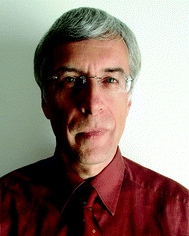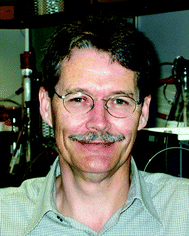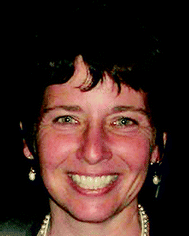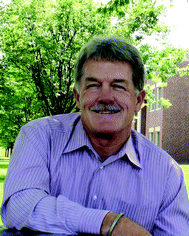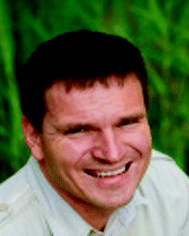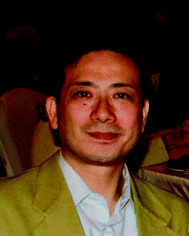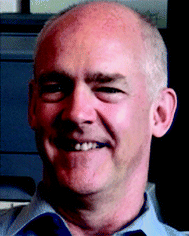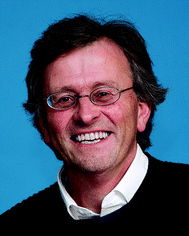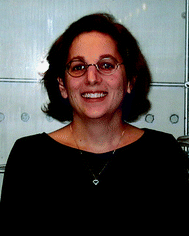Metallomics Editorial Board profiles
Wolfgang Maret
Wolfgang Maret FRSC obtained his MSc (chemistry) and PhD (natural sciences) from Saarland University, Saarbrücken, Germany. After postdoctoral research at the University of Chicago (Department of Biophysics & Theoretical Biology), his first faculty appointment was in the Research Center of the late Bert L. Vallee at Harvard Medical School. In 2002, he joined the University of Texas Medical Branch in Galveston, Texas as an Associate Professor. He is now a Professor of Metallomics at King's College London, London, UK (Metal Metabolism Group, Division of Diabetes and Nutritional Sciences, School of Medicine). His research interests began with the catalytic mechanisms of metalloenzymes as investigated with spectroscopic and kinetic methods and continued with the role of metal ions in health and disease, the molecular mechanisms of how proteins control nutritionally essential metal ions, and the cellular mechanism of how metal ions control protein structure and function. He is presently serving as president of the International Society for Zinc in Biology.
Mike Adams
Michael W. W. Adams is the Georgia Power Professor of Biotechnology and a Distinguished Research Professor of Biochemistry and Molecular Biology at the University of Georgia, Athens, USA. He is also Adjunct Professor of Microbiology and co-Director for the Center for Metalloenzymes Studies. Dr Adams obtained his BSc and PhD degrees in Biochemistry from King's College, University of London, UK. He spent two years as a post-doctorate at Purdue University before joining Exxon Research and Engineering Company in New Jersey in 1981. He moved to the Department of Biochemistry and Molecular Biology at the University of Georgia in 1987. Dr Adams has pioneered research with hyperthermophiles, which are microorganisms from volcanic environments that thrive near and above 100 °C, the normal boiling point of water. His research team developed the techniques to grow these organisms in large scale, and through molecular, genomic, biochemical and microbiological approaches, they have discovered and characterized many new metal-containing enzymes and metabolic pathways involved in biopolymer conversion and in the production of potential biofuels such as hydrogen. He has over 300 publications in the fields of high temperature microorganisms and metalloproteins. For the past ten years he was the Editor of the Journal of Bacteriology. In 2003 he was elected to the American Academy of Microbiology and in 2010 received the Charles Thom award for research excellence from the US Society of Industrial Microbiology for “outstanding research contributions in industrial microbiology and/or biotechnology”.
Rachel Austin
Rachel Narehood Austin is a bioinorganic chemist in the Department of Chemistry at Bates College. She joined the faculty in 1995 after completing a PhD at the University of North Carolina at Chapel Hill. Her laboratory has a longstanding interest in understanding the mechanisms of metalloenzymes, especially those important in the global cycling of elements, and developing and characterizing heterogeneous catalysts that can be used for green chemistry or environmental remediation. A major emphasis of her current research is the development of a detailed picture of both the structures and mechanisms of the metalloenzymes that have evolved to catalyze the oxidation of alkanes. Funding for the lab has been received from National Science Foundation (including grants for an EPR spectrometer with low temperature capabilities, a GC-MS and GC-FID, a 400 MHz NMR, in addition to research support), NIH, the Howard Hughes Medical Institute through several institutional grants to Bates College, the Merck/AAAS research fund, Pfizer, DOE, and the Dreyfus Foundation in the form of a Henry Dreyfus Teacher Scholar Award. She is the past chair (together with co-Chair Ariel Anbar) of the Environmental Bioinorganic Chemistry Gordon Research Conference.
David Koppenaal
David W. Koppenaal is Chief Technology Officer at the Environmental Molecular Sciences Center (EMSL) at Pacific Northwest National Laboratory in Richland, WA. Dr Koppenaal's research interests include the development of new instrumental techniques for metallomics applications and the metallomic study of cyanobacterial systems. Dr Koppenaal was an early proponent of metallomics as a new science discipline, serving as an advocate and speaker on this topic since 2000, organizing the first symposia focused on this topic in the US, and serving as co-chair of the 2nd International Metallomics Symposium (2009). Dr Koppenaal is well-known for his fundamental science investigations and innovations in atomic mass spectrometry, including the initial development and demonstration of effective reaction cell technology and associated ion molecule reaction approaches for interference reduction in ICPMS. More recently he has developed and applied ultra-high resolution orbital trapping techniques to metallomics applications. Dr Koppenaal has also served as Editorial Board member of JAAS, and as Chair of the Analytical Division of the American Chemical Society. He is a Fellow of the Royal Society of Chemistry, the American Association for the Advancement of Science, and the American Chemical Society.
Ryszard Lobinski
Ryszard Lobinski is research director at the CNRS (Laboratory of Analytical Bioinorganic and Environmental Chemistry in Pau) and professor of chemistry at the Warsaw University of Technology. He obtained his PhD (1989) and DSc (habilitation) (1994) degrees from the Warsaw University of Technology, Poland. He held postdoctoral positions at the Institute of Spectroscopy and Applied Spectrometry (ISAS) in Dortmund (1990) and at the University of Antwerp (UIA) (1991–1994) before joining the National Research Council of France (CNRS) in 1994. R. Lobinski is the author or co-author of over 200 articles in international journals, 3 books, 3 edited journal issues, and about 90 invited lectures at international meetings. He received the CNRS 2006 Silver Medal and is a Fellow of the Royal Society of Chemistry. He is also the co-director of UltraTrace Analyses Aquitaine (UT2A) (a startup company at the University of Pau) and Past-President of the Analytical Chemistry Division of IUPAC. His principal research interest is the development of analytical approaches to species-specific (speciation) analysis for trace and ultratrace metals in environmental and nutrition chemistry and in life sciences.
Yasumitsu Ogra
Yasumitsu Ogra obtained his BS degree from Tokyo University of Pharmacy and Life Sciences in 1991, and his PhD from Chiba University (Japan) in 1996. He continued carrying out scientific research as a post-doctoral fellow at National Institute of Industrial Health (Japan), and worked in the Department of Toxicology and Environmental health, Graduate School of Pharmaceutical Sciences, Chiba University as a research associate (1997–2003) and an associate professor (2004–2009). He was a visiting scientist of the French National Research Council (CNRS) in 2002 and 2003. Since April 2009, He has been a full professor of Laboratory of Chemical Toxicology and Environmental Health, Showa Pharmaceutical University, Tokyo, Japan. His current research interests include the elucidation of mechanisms underlying physiological and toxicological effects of metals and metalloids, and development of a novel approach to metal/metalloid toxicology by combination between speciation/fractionation of metals/metalloids and molecular biological techniques. Namely, his special attention is devoted to toxicology in metallomics, i.e., toxicometallomics.
Chris Orvig
Chris Orvig was born and raised in Montréal. He followed his father to McGill University, for his Hons. BSc in chemistry from McGill University in 1976 and subsequently completed his doctorate (as a Natural Sciences and Engineering Research Council – NSERC – of Canada scholar) in technetium chemistry at M.I.T. with Prof. Alan Davison, FRS. After an NSERC postdoctoral fellowship with Prof. Kenneth N. Raymond at the University of California, Berkeley (1981–1983) and one year with the late Prof. Colin J. L. Lock at McMaster University, he joined the Department of Chemistry at the University of British Columbia in 1984, where he is now Professor of Chemistry and Pharmaceutical Sciences, and Director of the Medicinal Inorganic Chemistry Group. His scientific interests are firmly based in the areas of medicinal inorganic chemistry and coordination chemistry – he has been involved over the years with radiopharmaceutical chemistry, metal ion decorporation, and metal ion neurotoxicology, as well as chemotherapeutic metal complexes and ligands. Orvig has received various research and teaching awards, has published more than 200 research papers, and is a co-inventor on many issued patents; he is also a Fellow of the Royal Society of Canada.
Nigel Robinson
Nigel Robinson is Biophysical Sciences Institute Biology Professor at the University of Durham. He completed his undergraduate degree at the University of Liverpool, specialising in Botany, graduating with a first in 1981 and completing a doctorate in 1984 with David Thurman on the mechanism of copper tolerance in Mimulus guttatus. Supported by Fellowships from the Natural Environment Research Council, and Directors-office of Los Alamos National Laboratory, he worked with Paul Jackson at LANL (1984–1987) then held a Royal Society University Research Fellowship at Durham University, UK (1987–1994) to gather genetic resources for metal homeostasis. He was awarded the President’s medal of the Society for Experimental Biology in 1993 in recognition of distinguished work on metalloproteins and metal interactions with plant and microbial cells. In 1994 he was appointed to the chair of Genetics in the Medical School at Newcastle University and in 2011 to his current post in Durham. He has trained two-dozen postgraduates, written circa one hundred papers, served as editorial advisor to Molecular Microbiology and the Biochemical Journal, organised more than a dozen metals-related conferences, delivered more than a hundred invited lectures and co-instigated (with Dr Dennis Winge of the University of Utah) the Gordon Research Conference series on the Cell Biology of Metals. With nearly a half of enzymes estimated to need metals he has contributed to understanding how cells assist proteins to acquire the correct metals.
Hongzhe Sun
Hongzhe Sun obtained his PhD from the University of London with Peter J. Sadler in 1996. After postdoctoral work at the University of Edinburgh, he joined the Department of Chemistry at the University of Hong Kong in 1998 where he is currently a professor. He is the recipient of the NSFC Outstanding Young Scholar Award in 2005, and serves on the Advisory Board of the Journal of Biological Inorganic Chemistry. His research interests are centred on metallodrugs and metalloproteins, inorganic structural biology and metallomics.
Deborah Zamble
Deborah B. Zamble graduated from the University of Toronto in 1993 with a BSc in Chemistry and Biochemistry, completing her undergraduate thesis work with Bibudhendra Sarkar. She earned a PhD in Biological Chemistry at M.I.T. in 1999, where she worked under the guidance of Stephen J. Lippard on the mechanism of action of the anticancer drug cisplatin. As a postdoctoral fellow (1999–2001) with Christopher T. Walsh at Harvard Medical School she studied the zinc-containing component of the antibiotic Microcin B17 synthetase. She is now a Professor of Chemistry at the University of Toronto, Canada. Her main themes of interest concern the bioinorganic chemistry and mechanisms of action of proteins involved in intracellular nickel homeostasis.
| This journal is © The Royal Society of Chemistry 2014 |

